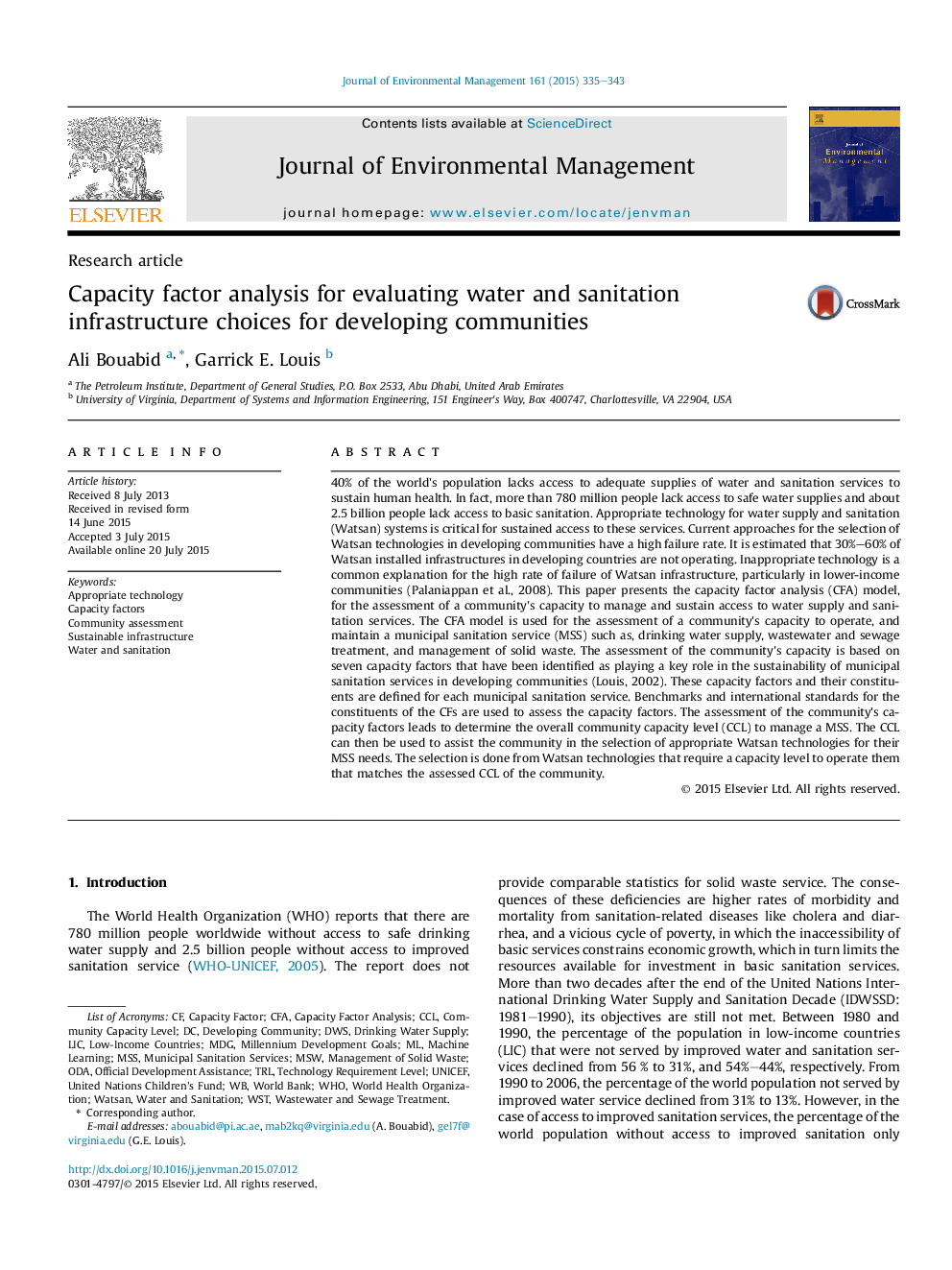| کد مقاله | کد نشریه | سال انتشار | مقاله انگلیسی | نسخه تمام متن |
|---|---|---|---|---|
| 7481851 | 1485251 | 2015 | 9 صفحه PDF | دانلود رایگان |
عنوان انگلیسی مقاله ISI
Capacity factor analysis for evaluating water and sanitation infrastructure choices for developing communities
ترجمه فارسی عنوان
تجزیه و تحلیل عامل ظرفیت برای ارزیابی گزینه های زیربنایی آب و بهداشت برای توسعه جوامع
دانلود مقاله + سفارش ترجمه
دانلود مقاله ISI انگلیسی
رایگان برای ایرانیان
کلمات کلیدی
LICCapacity factorsWSTMDGTRLCCLMSSDWSCFAMSWwater and sanitation - آب و فاضلابODA - اتاقCommunity assessment - ارزیابی جامعهMillennium Development Goals - اهداف توسعه هزارهWorld Bank - بانک جهانیDrinking water supply - تامین آب آشامیدنیAppropriate technology - تکنولوژی مناسبSustainable infrastructure - زیرساخت های پایدارWorld Health Organization - سازمان بهداشت جهانیUnited Nations Children's Fund - صندوق کودکان سازمان ملل متحدCapacity factor - فاکتور ظرفیتLow-income countries - کشورهای کم درآمدofficial development assistance - کمک های رسمی توسعهWHO - کهMachine learning - یادگیری ماشینUNICEF - یونیسف
موضوعات مرتبط
مهندسی و علوم پایه
مهندسی انرژی
انرژی های تجدید پذیر، توسعه پایدار و محیط زیست
چکیده انگلیسی
40% of the world's population lacks access to adequate supplies of water and sanitation services to sustain human health. In fact, more than 780 million people lack access to safe water supplies and about 2.5 billion people lack access to basic sanitation. Appropriate technology for water supply and sanitation (Watsan) systems is critical for sustained access to these services. Current approaches for the selection of Watsan technologies in developing communities have a high failure rate. It is estimated that 30%-60% of Watsan installed infrastructures in developing countries are not operating. Inappropriate technology is a common explanation for the high rate of failure of Watsan infrastructure, particularly in lower-income communities (Palaniappan et al., 2008). This paper presents the capacity factor analysis (CFA) model, for the assessment of a community's capacity to manage and sustain access to water supply and sanitation services. The CFA model is used for the assessment of a community's capacity to operate, and maintain a municipal sanitation service (MSS) such as, drinking water supply, wastewater and sewage treatment, and management of solid waste. The assessment of the community's capacity is based on seven capacity factors that have been identified as playing a key role in the sustainability of municipal sanitation services in developing communities (Louis, 2002). These capacity factors and their constituents are defined for each municipal sanitation service. Benchmarks and international standards for the constituents of the CFs are used to assess the capacity factors. The assessment of the community's capacity factors leads to determine the overall community capacity level (CCL) to manage a MSS. The CCL can then be used to assist the community in the selection of appropriate Watsan technologies for their MSS needs. The selection is done from Watsan technologies that require a capacity level to operate them that matches the assessed CCL of the community.
ناشر
Database: Elsevier - ScienceDirect (ساینس دایرکت)
Journal: Journal of Environmental Management - Volume 161, 15 September 2015, Pages 335-343
Journal: Journal of Environmental Management - Volume 161, 15 September 2015, Pages 335-343
نویسندگان
Ali Bouabid, Garrick E. Louis,
